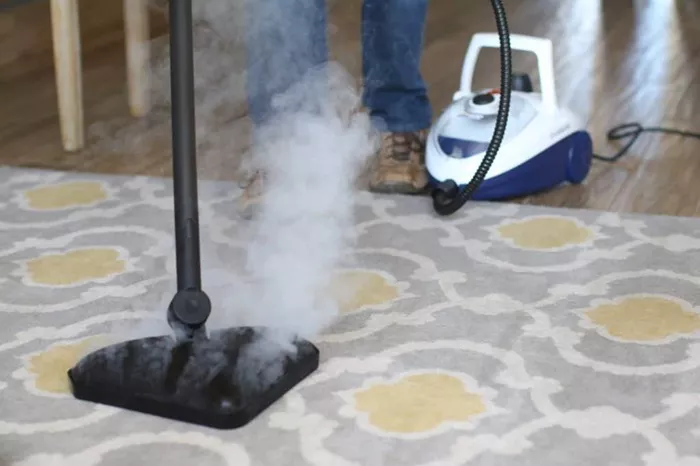Steam cleaning is a popular method for deep-cleaning carpets. It uses hot water and steam to remove dirt, stains, and allergens from your carpets. However, one of the most common questions people have after steam cleaning their carpets is: How long do carpets take to dry? In this article, we’ll explore this question in detail, discussing the factors that affect drying time, how to speed up the process, and what you can do to ensure your carpets dry thoroughly.
Understanding Steam Cleaning
What is Steam Cleaning?
Steam cleaning, also known as hot water extraction, involves using a machine to apply hot water mixed with cleaning solutions to the carpet. This mixture is then extracted using a vacuum function. The process not only cleans the carpet but also sanitizes it.
How Steam Cleaning Works
Pre-Treatment: The carpet is first pre-treated with a cleaning solution to loosen dirt and stains.
Hot Water Application: Hot water is sprayed onto the carpet to further dissolve grime.
Extraction: The hot water and dirt are then sucked up by a powerful vacuum, leaving the carpet cleaner and fresher.
Factors Affecting Carpet Drying Time
1. Carpet Material
The type of carpet you have can significantly affect how long it takes to dry.
Synthetic Carpets: Made from materials like nylon or polyester, these carpets usually dry faster. They are less absorbent and can release moisture more quickly.
Natural Fiber Carpets: Wool or cotton carpets are more absorbent and may take longer to dry.
2. Carpet Padding
Carpet padding or underlay can impact drying time.
Foam Padding: This type of padding absorbs water, which can slow down the drying process.
Rubber Padding: It is less absorbent and helps the carpet dry faster.
3. Air Circulation
Good air circulation speeds up drying time.
Ventilation: Open windows and doors to allow fresh air to circulate.
Fans: Using fans can help move air across the carpet.
Air Conditioners: Air conditioning can also help by reducing humidity levels.
4. Temperature and Humidity
The environment in which the carpet is drying plays a crucial role.
Temperature: Warmer temperatures can speed up drying.
Humidity: High humidity levels can slow down the drying process. Using a dehumidifier can help.
5. Amount of Water Used
The amount of water applied during the cleaning process affects drying time.
Excess Water: If too much water is used, it can take longer for the carpet to dry.
Proper Extraction: Effective water extraction by the steam cleaner reduces drying time.
6. Cleaning Method
Different steam cleaning methods can affect how much water is left in the carpet.
Hot Water Extraction: This method typically leaves less moisture behind compared to other methods.
Dry Steam Cleaning: This method uses less water and generally dries faster.
Typical Drying Times
1. Average Drying Time
On average, carpets can take anywhere from 6 to 12 hours to dry completely after steam cleaning. This range depends on the factors mentioned above.
2. Fast Drying Methods
In some cases, carpets may dry in as little as 4 to 6 hours. This is typically achieved with optimal air circulation, warm temperatures, and efficient water extraction.
3. Extended Drying Times
In unfavorable conditions, carpets might take up to 24 hours or more to dry. High humidity and poor ventilation are common reasons for extended drying times.
See Also: How Does a Carpet Sweeper Work?
Tips for Faster Drying
1. Improve Air Flow
Increase ventilation by opening windows and doors. Use fans to circulate air around the carpet. Placing fans at various angles can help speed up the drying process.
2. Use Dehumidifiers
Dehumidifiers can help remove excess moisture from the air, aiding in faster carpet drying. This is particularly useful in humid climates or during rainy seasons.
3. Increase Temperature
Raise the room temperature to help the carpet dry faster. However, avoid making it too hot, as excessive heat can damage the carpet fibers.
4. Avoid Walking on Wet Carpets
Try to keep people and pets off the carpet while it is drying. Walking on wet carpets can not only delay drying but also leave impressions and potentially cause damage.
5. Check for Proper Extraction
Ensure that the steam cleaner is properly extracting water. If the machine is not functioning optimally, it may leave excess water in the carpet.
Potential Issues with Slow Drying
1. Mold and Mildew
If carpets are not dried properly, there is a risk of mold and mildew growth. Mold can cause health issues and unpleasant odors.
2. Carpet Damage
Prolonged moisture can weaken carpet fibers and backing, leading to damage and reduced lifespan.
3. Persistent Odors
Wet carpets can develop unpleasant odors if not dried quickly. Proper drying techniques can help prevent this issue.
Conclusion
Carpet drying time after steam cleaning depends on various factors, including the type of carpet, padding, air circulation, temperature, and humidity. On average, carpets take between 6 to 12 hours to dry, but conditions can extend this period. By improving air flow, using dehumidifiers, and ensuring proper water extraction, you can speed up the drying process and avoid potential issues like mold growth and carpet damage.
Understanding these factors and following the tips provided will help you achieve a faster and more effective carpet drying experience.

